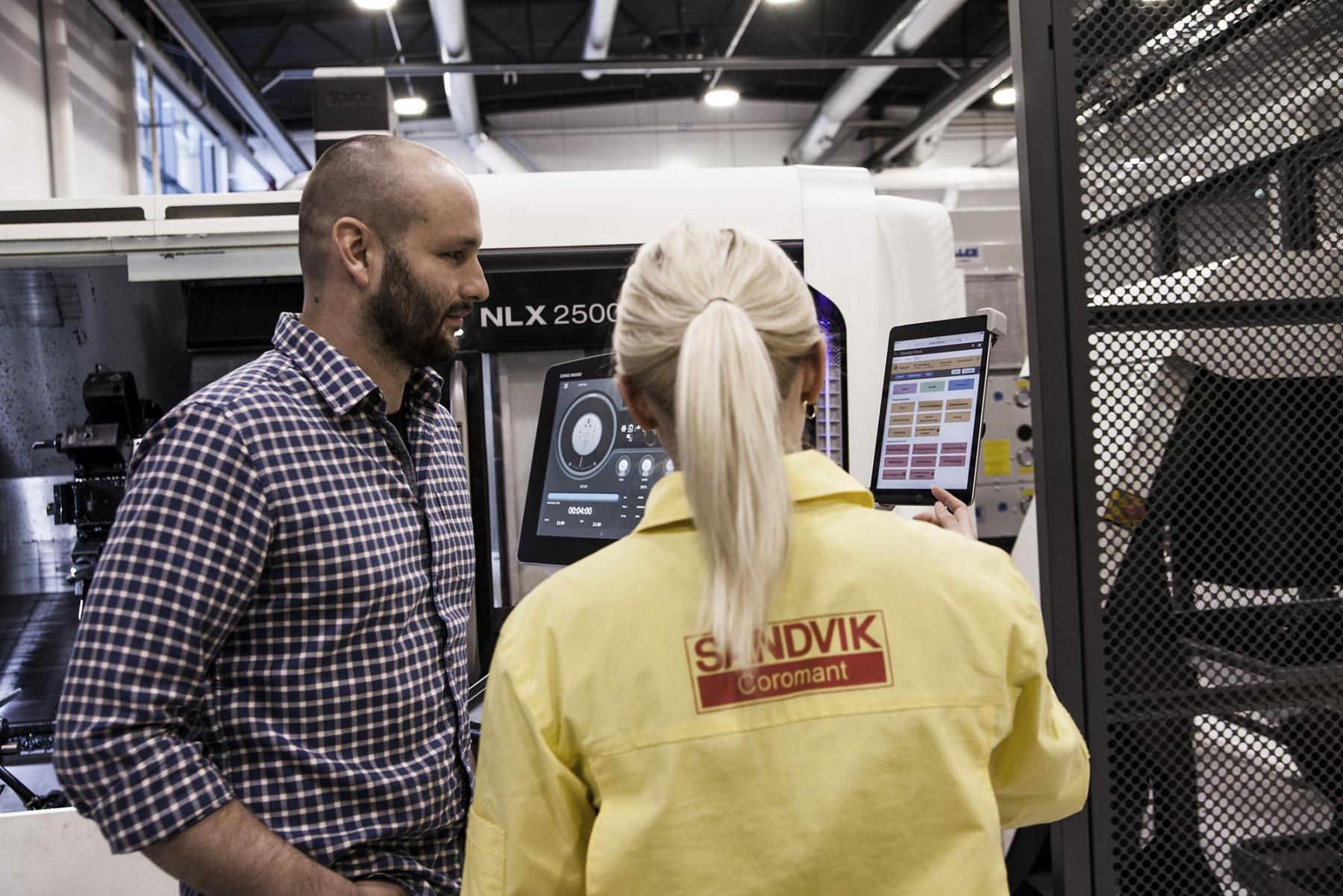Survey Reveals: Gen-Z Demands Sustainable Employers for Dream Careers
 A recent survey by KPMG reveals that the next generation are seeking more responsible employers. Finding that a third of so-called ‘Gen-Z’—those born between 1997 and 2010—would reject a job offer if they didn’t like a company’s sustainability credentials, it’s apparent that an attractive salary and career progression are no longer the only characteristics of a dream role. But in manufacturing, an industry still striving to adopt more sustainable practices, how can organizations attract a new generation of talent? Here, Patrik Eurenius, Head of Sustainability and EHS, Sandvik Coromant, investigates.
A recent survey by KPMG reveals that the next generation are seeking more responsible employers. Finding that a third of so-called ‘Gen-Z’—those born between 1997 and 2010—would reject a job offer if they didn’t like a company’s sustainability credentials, it’s apparent that an attractive salary and career progression are no longer the only characteristics of a dream role. But in manufacturing, an industry still striving to adopt more sustainable practices, how can organizations attract a new generation of talent? Here, Patrik Eurenius, Head of Sustainability and EHS, Sandvik Coromant, investigates.
KPMG’s research, published in January 2023, reveals a stark insight into the talent market. According to the survey, 55 percent of those aged 25-34 are the most likely to value environmental, social, and governance (ESG) commitments from their employer, with 51 percent of 18–24-year-olds also agreeing. When looking for a new role, one in five respondents said they had turned down a job because the company’s ESG commitments were not in line with their values, rising to one in three for 18–24-year-olds.
So, is manufacturing poised to attract environmentally conscious talent? In its 2021 Sustainable Manufacturing: From Vision to Action report, Deloitte declared: “Significant change is afoot [in manufacturing] and it necessitates bigger thinking. Those unprepared may find themselves being left behind.” The report also predicts that growing trends, like the shift towards smart factories and digitalized supply networks, will accelerate. Robust ESG strategies are becoming integral to both the bottom line and employer satisfaction, but can the industry see success in both areas?
Clarity is key
Meaningful sustainability objectives require transparency in the way they are communicated. When communicating a sustainability policy, businesses are at risk of greenwashing—when a company spends time and money on marketing itself as environmentally friendly, rather than actually minimizing its environmental impact. It’s therefore important an organization—especially a manufacturing one—not only communicates its goals, but is also clear on what it’s doing to meet those objectives.
The sustainability agenda is evolving fast and it can feel like the world wants to know where you are and what you’re doing, all of the time. Maintaining a clear narrative is critical, or efforts can get lost among the noise. It’s therefore better to tell a simplified, consistent, and credible story when you’re communicating sustainability externally.
There’s no one-size-fits-all approach to sustainable transformation. A retail business and a machine shop are unlikely to share the same needs and strategies. Ideally, sustainability efforts should target business function improvements that directly relate to an organization’s position in the market. At Sandvik Coromant, for example, our lifeblood is developing innovations for metal cutting. Tools and inserts, such as turning grades and industrial drill parts, are our expertise.
Because our business relies so heavily on the sale of effective, cutting-edge tools, we recognized we needed to make this area more sustainable. For several years, Sandvik Coromant has offered a resilient carbide recycling program that allows customers to sell their used tools back to Sandvik Coromant so that they can be recycled. We also offer customers a tool reconditioning service, so that their worn, but still usable, tools can be returned to their original condition. Both of these services feed into our sustainability goal of becoming more than 90 percent circular by 2030.
Ultimately, aligning sustainability goals with your core business model will ensure their integrity, creating a connecting line between who you are and what you do. Maintaining that narrative in all external communication, particularly in efforts to attract new employees, will showcase your business as one that knows its impact on the world and is consistent in its efforts.
The science of sustainable business
Having a consistent sustainability strategy is important—but there’s a need to evidence that narrative, too. Particularly for those working in science, technology, manufacturing, and engineering (STEM), having the science to back up your rationale is a key trust marker that can offer another attraction for prospective employees that will appreciate a detailed, evidenced claim. There are several science-based models an organization can follow to give further credibility to its sustainability discourse.
That includes the Science Based Targets initiative (SBTi), a global partnership between CDP, the United Nations Global Compact, World Resources Institute (WRI), and the World Wide Fund for Nature (WWF). Evolving into a global standards setter for corporate emissions reduction targets, the SBTi acts as the lead partner for the Business Ambition for 1.5°C campaign—an urgent call to action from a global union of UN agencies and industry leaders, rallying companies to set net-zero science-based targets in line with a 1.5°C future.
Those committing to the SBTi must set targets that cover at least five years and a maximum of 15 years and, at a minimum, must be consistent with the level of decarbonization required to keep global temperature increase to below 2°C from preindustrial temperatures, though companies are encouraged to pursue a 1.5°C trajectory.
Having science-based goals in place offers evidence that a business is acting to improve its sustainability credentials. In fact, a survey from the SBTi found that 79 percent of corporate executives report a strengthened brand reputation to be one of the most significant business benefits committing to the SBTi has yielded. As of today, more than 5,000 companies covering over a third of the global economy’s market capitalization have signed up with the SBTi. Sandvik, including Sandvik Coromant, signed up in 2022. As part of its environmental ambitions, Sandvik Coromant is working towards halving its CO2 emissions in its own operations, and is actively engaging with stakeholders, partners, and suppliers to help reduce the organization’s total carbon footprint.
A brighter future
Younger generations, like Gen Z and millennials, have grown up in a time of increasing awareness of the impact our activities have on the planet. They are more likely to prioritize sustainability and have a desire to make a difference. Ultimately, sustainable businesses are seen as forward-thinking and adaptable to the challenges of the future—and who wouldn’t want to work at a business that embodies those values?
It’s a two-way street of benefits. Companies that are clear, consistent, and demonstrate sustainable credentials will attract the next generation of greener talent, as KPMG’s research suggests. At the same time, companies that attract talent that is innately more interested in sustainable business will benefit from an engaged, invested workforce.
www.sandvik.coromant.com











